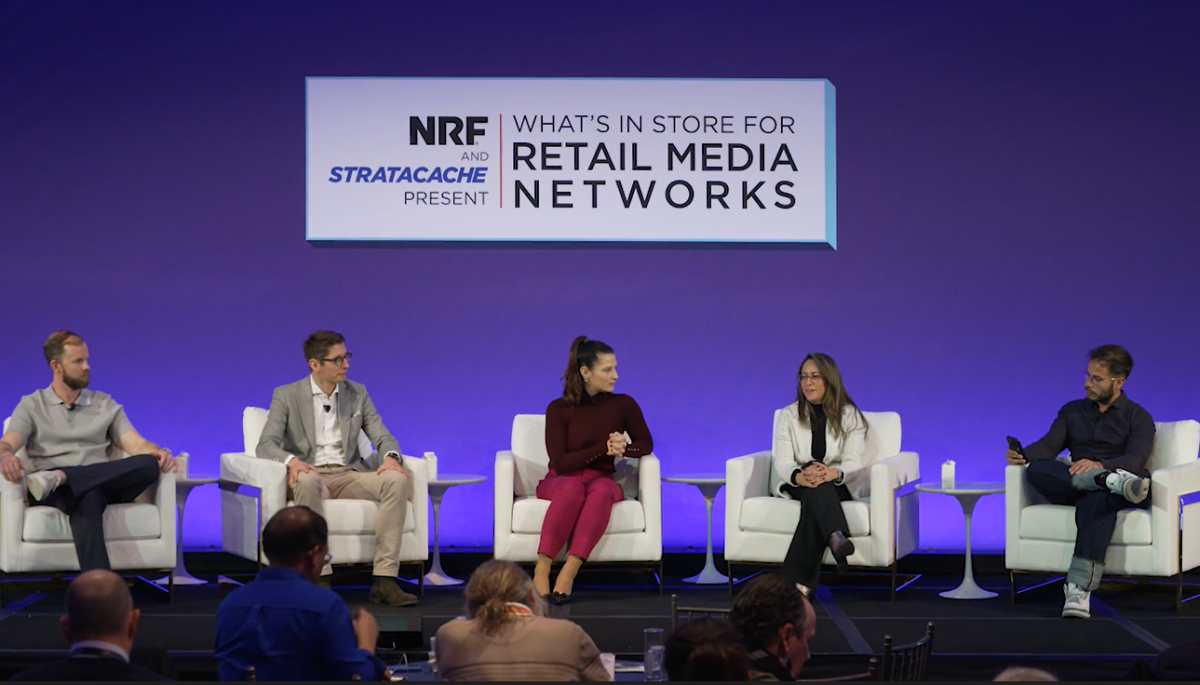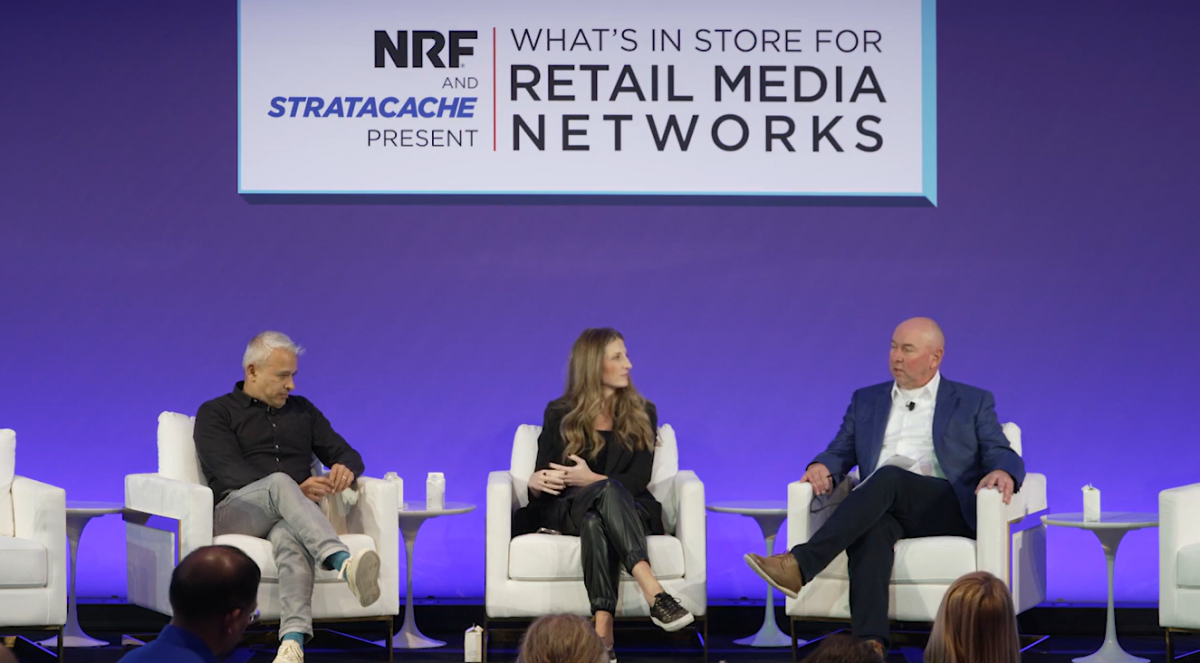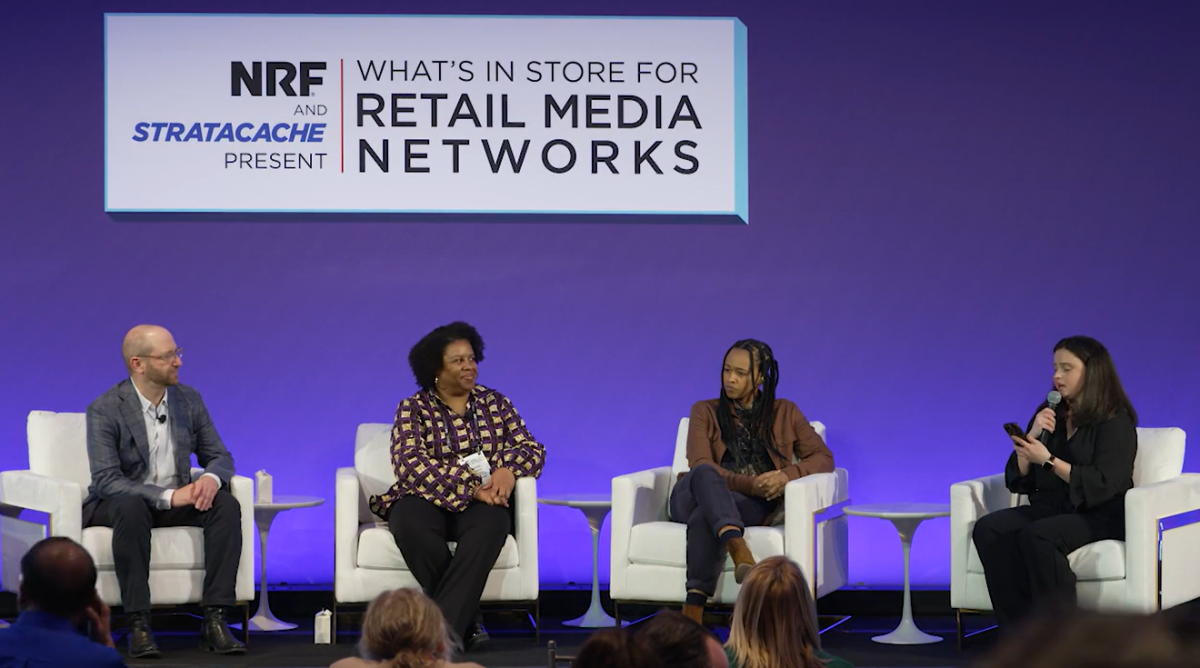The Global Playbook for In-Store Retail Media
In-store retail media is seeing particularly strong momentum across global markets even in times of economic uncertainty. At the STRATACACHE What’s In Store for Retail Media Networks event at NRF 2025, a panel of industry experts from Walmart Connect Mexico, OBI First Media Group, REWE Group Retail Media Connect, and SMG discussed the growth of in-store retail media and shared their insights on best practices, measurement strategies, and future trends.
Why In-Store Retail Media is Thriving Globally
While in-store retail media has gained traction in the U.S., its adoption in Europe and Latin America is expanding even more rapidly. Panelists highlighted several key drivers:
- Customer-Centric Strategies: Patricia Grundmann, VP of Retail Media and Managing Director of OBI First Media Group, emphasized the importance of aligning in-store media with customer journeys. For retailers with large-format stores, this means integrating digital signage, in-store radio and video walls to engage shoppers from the parking lot to the checkout aisle.
- High Retail Foot Traffic: Ailne Garza Heiras, Head of Planning and Client Success at Walmart Connect Mexico, noted that 94% of Walmart Mexico’s sales come from physical stores, presenting a unique opportunity to reach millions of customers daily — often more effectively than traditional media channels.
- Data Integration: Successful retail media strategies rely on merging online and offline data, enabling brands to deliver highly targeted and personalized in-store experiences.
What Advertisers Want from In-Store Retail Media
Advertisers are increasingly investing in in-store retail media, but their priorities vary by market. According to Christian Raveaux, Head of Retail Media Connect at REWE Group, new product introductions are one of the biggest use cases for in-store retail media. Brands need more than just return on ad spend (ROAS); they also seek increased awareness and measurable brand impact.
Sean Crawford, Managing Director for North America at SMG stressed the importance of consistency across media touchpoints. Advertisers expect their messaging to remain uniform whether a shopper sees an ad in-store, on a retailer’s website, or through off-site programmatic channels. Moreover, advertisers are focused on minimizing wasted ad spend by leveraging first-party retail data to reach the right customers at the right time.
Overcoming Operational Challenges at Scale
Implementing in-store retail media at scale presents logistical hurdles. Walmart Connect Mexico has focused on three key areas:
- Digital Transformation – Migrating from traditional media like printed shelf tags to digital signage and smart displays.
- Personalization and Smart Sensors – Deploying in-store sensors to tailor advertising based on real-time shopper behavior.
- Omnichannel Measurement – Achieving digital-like precision in measuring in-store campaign effectiveness.
Sean Crawford pointed out that many retailers are still navigating the complexities of becoming media companies. Structuring retail media operations, managing ad tech investments, and ensuring internal alignment on revenue flow are all critical to scaling successfully.
The Importance of Measurement and Standardization
Retailers and advertisers alike are seeking more robust measurement solutions. Patricia Grundmann emphasized that first-party data, particularly from loyalty programs, plays a crucial role in capturing insights beyond purchase data. OBI First Media Group, for example, uses its loyalty app not only to track transactions but also to engage customers with service offerings like virtual home improvement consultations.
Christian Raveaux highlighted the significance of integrating in-store metrics with established digital measurement frameworks. As industry standards for in-store media measurement continue to develop, early adopters are gaining an edge by proving the impact of their campaigns through A/B testing, brand lift studies, and foot traffic analysis.
What’s Next for In-Store Retail Media?
Looking ahead, the panelists identified three major trends shaping the future of in-store retail media:
- Expansion of Digital Signage – Retailers are investing in digital screens, seeing rapid ROI and a shorter payback period.
- Retailtainment and Experiential Marketing – Walmart Connect is piloting flagship brand stores and large-scale in-store events to create immersive brand experiences.
- AI and Personalization – The next frontier is leveraging AI to dynamically adjust in-store advertising based on real-time customer engagement.
Final Thoughts
As retail media continues to mature, in-store activations are becoming a key differentiator for global retailers. This panel discussion underscored that success in this space depends on integrating digital capabilities, leveraging first-party data, and refining measurement frameworks.
For brands and advertisers, in-store retail media is no longer just about point-of-purchase marketing — it’s a fully connected, omnichannel experience that drives brand engagement and sales at scale.
What’s Next?








